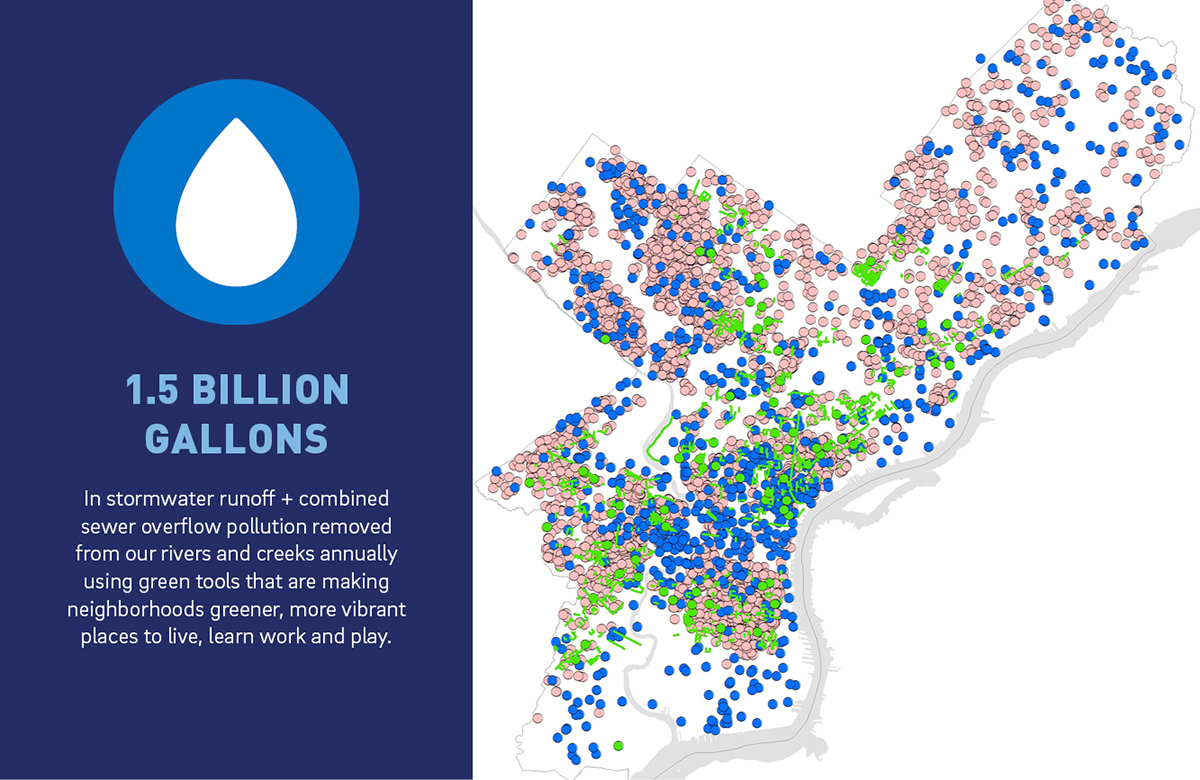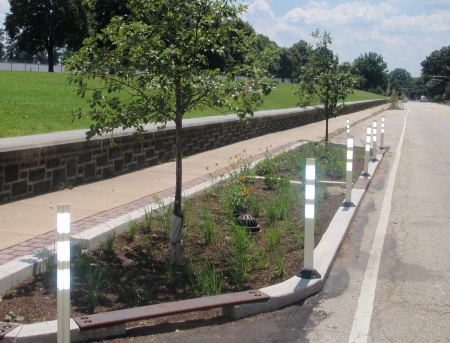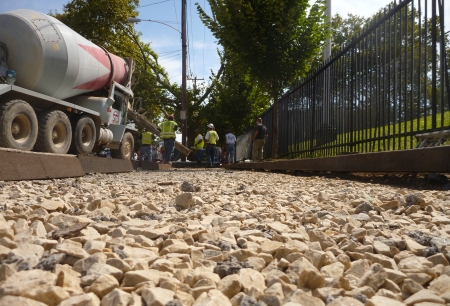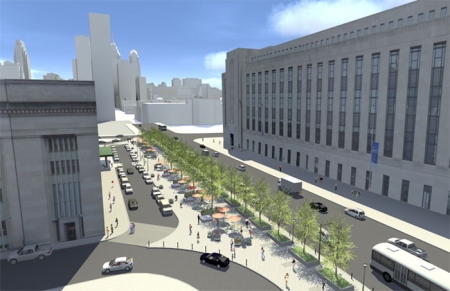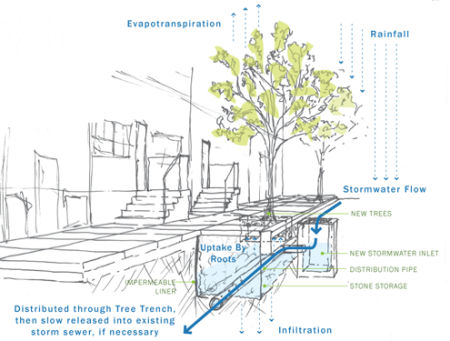
The Philadelphia Water Department's green infrastructure projects—tree trenches, rain gardens, porous paving and planters, just to name a few—are designed to store and infiltrate stormwater runoff into the ground. By keeping this water out of our sewers, we can prevent sewer overflows that damage the health of our rivers and streams. In the last month, Hurricane Irene and Tropical Storm Lee put our green stormwater projects to the test with periods of intense rainfall.
PWD's stormwater team monitored the performance of stormwater tree trenches, rain gardens, porous pavement, basins and stormwater planters at 10 different sites around the city during one or both of these storms. Some preliminary results are in, and it seems the green infrastructure has performed admirably. At the tree trenches located at Montgomery Avenue between Frankford and Blair streets in Kensington, sensors were placed underground to measure the water depth beneath the system.
The graphs below chart the depth during each storm, which is a rough indication of how much water is entering the system. As the water flows out and infiltrates the soil, you can see the blue line dip down; in the case of Lee, the multiple peaks in the graph indicate intermittent rainfall over the three days. The pink line represents the depth of the tree trench's storage system (i.e., the maximum depth before the system safely overflows into the sewer), which is 4.5 feet.

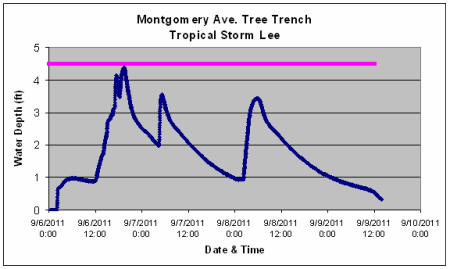
To find out where PWD has implemented or planned green infrastructure throughout Philadelphia, check out our Big Green Map.
